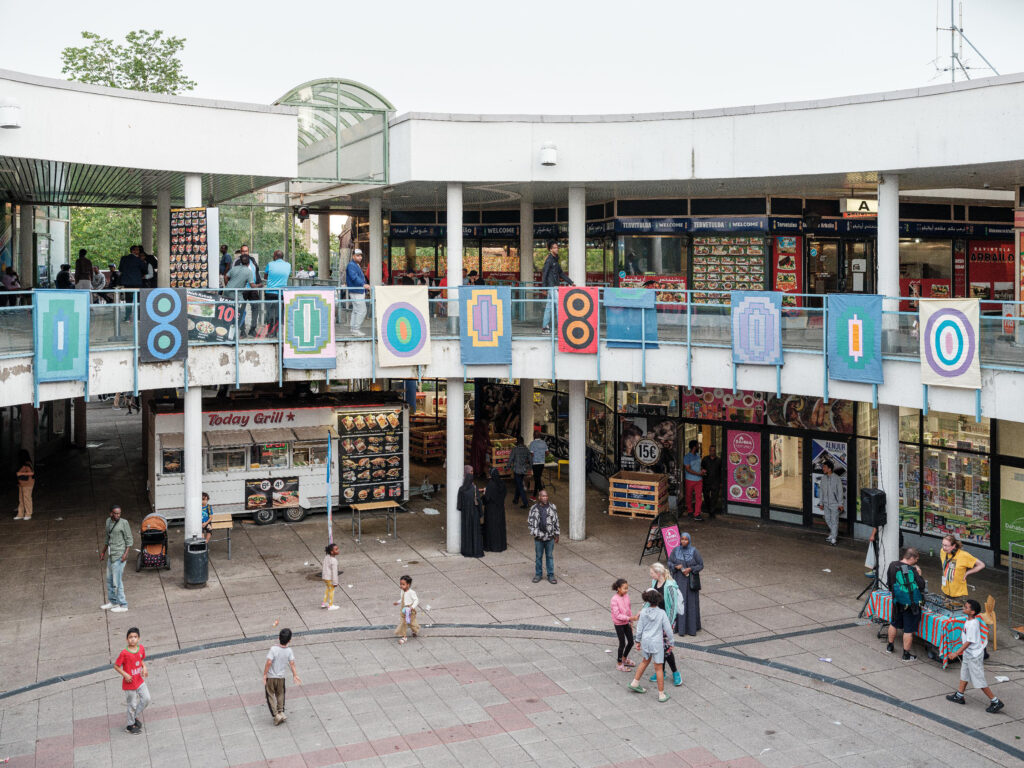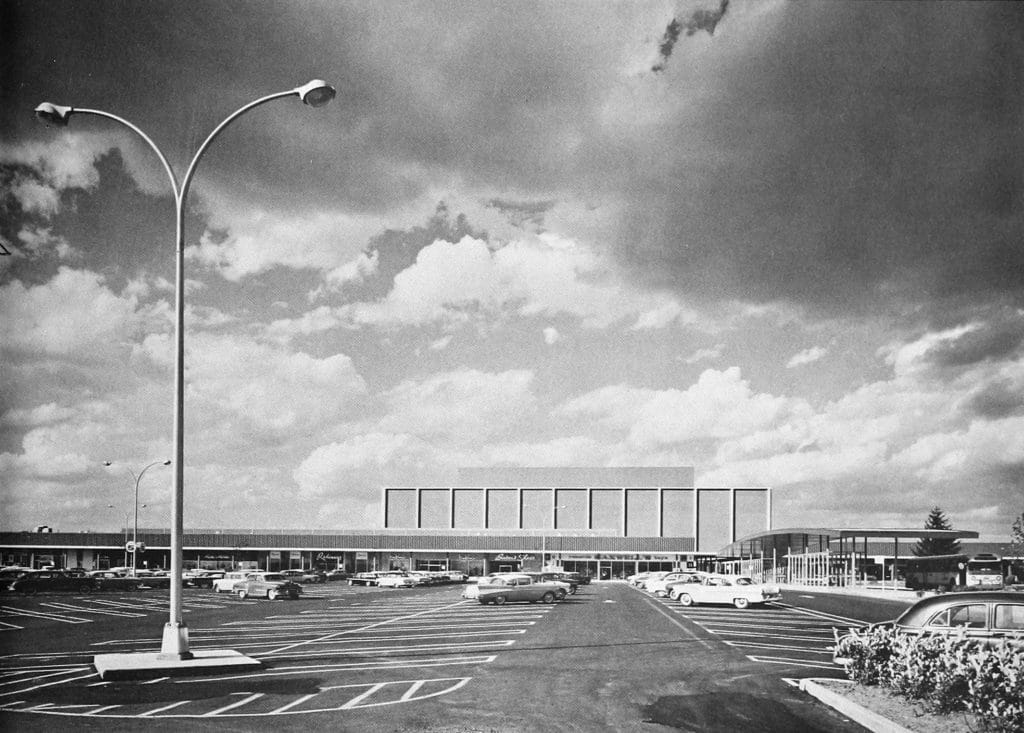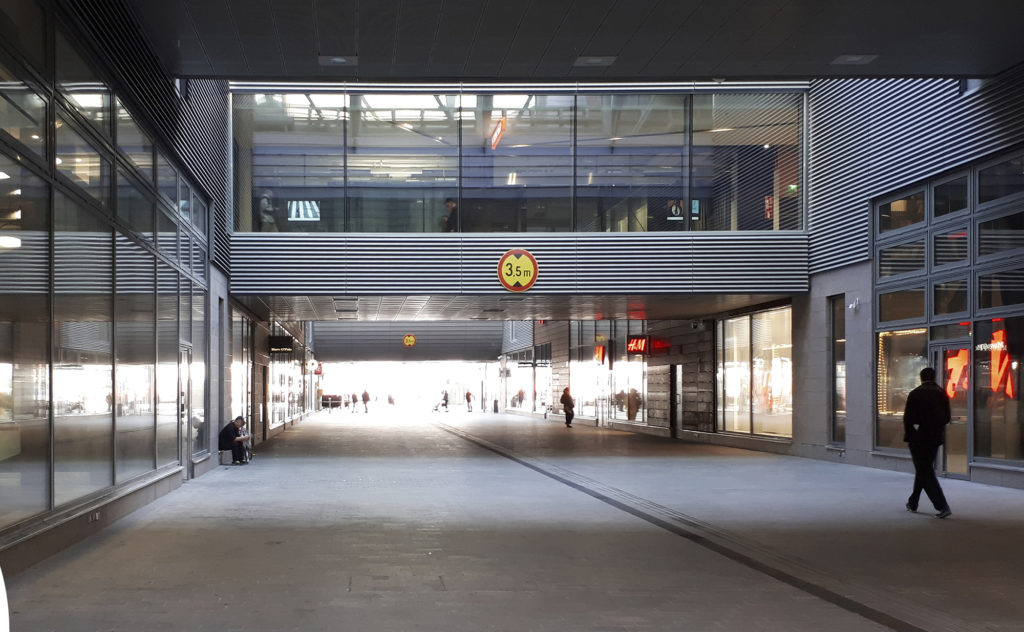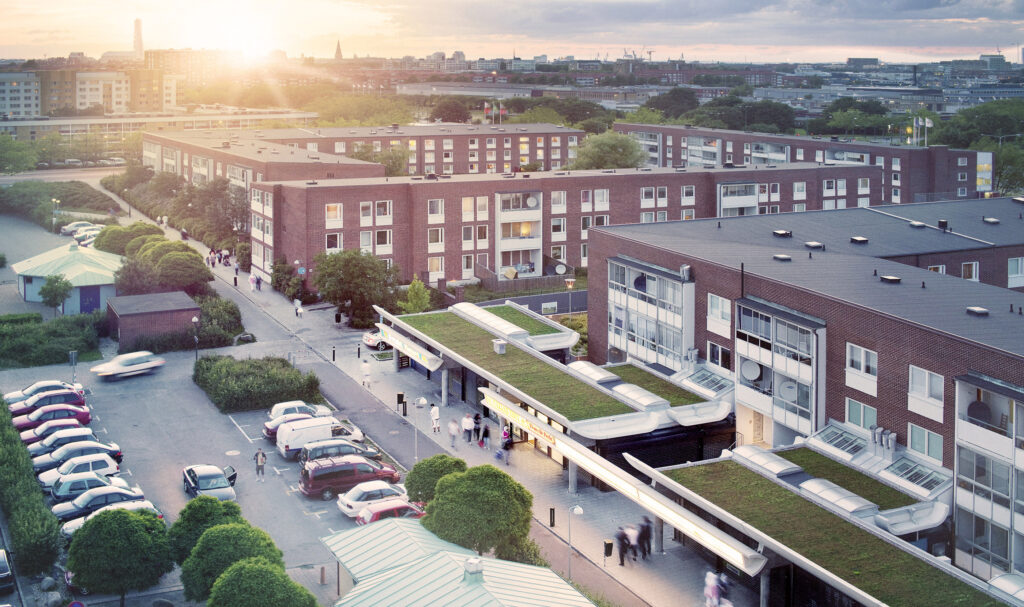The Other Side of Neighbourhood Shopping Centres

By tearing down old neighbourhood shopping centres, we are losing not only high-quality architecture but also services, extraordinary culture and tax euros, argues Juhana Heikonen.
In 2004, the Helsinki City Museum commissioned a comprehensive building history survey (Ostari – lähiön sydän) on the architectural values embedded in old suburban shopping centres at a point in time when a wide-scale campaign for the rezoning and demolition of these had already begun. The survey was updated in 2021 with a status report, which began by declaring that ten of the shopping centres surveyed in the previous version had already been torn down. Since the update, Helsinki has decided on the demolition of several more. What else, besides undisputedly valuable architecture, are we losing with the disappearing shopping centres?
One of the key mistakes that the City of Helsinki has made during the 21st century has been to allocate large new shopping centres to major public transport nodes. They offer a seemingly wide range of services, but, in reality, all of the large shopping centres are populated by the same international retail chains, with rent levels that small businesses simply cannot afford.
The old neighbourhood shopping centres were chiefly established as property management companies that were jointly owned by the service providers. The cooperatives HOK and Elanto with their grocery shops were often the largest shareholders. In Helsinki, neighbourhood shopping centres were typically built on land leased from the city, supporting the introduction of services into the suburbs. With banks and grocery chains cutting down their local services, however, the property management companies have had to find new users for the premises. In recent years, HOK-Elanto has been an active player in the effort to tear down the neighbourhood shopping centres in which they themselves are shareholders.
Today, the old shopping centres are among the most diverse providers of local services. The Puhos Shopping Centre (Erkki Karvinen 1965) is like a parallel reality to the gigantic malls like Tripla, offering a multitude of neighbourhood services ranging from local pubs to ethnic grocery stores. Transporting these to the expensive new megamalls would be financially impossible. These days, the local pub may be the only remaining community service and meeting place in many neighbourhoods.
A lot of articles have been written about the versatile services of our old neighbourhood shopping centres, but their economic impacts have been largely overlooked. According to public financial records, the small businesses, primarily run by immigrants, at the traditional shopping centres are turning in good profits and contributing to taxes in Finland, unlike the international retail and restaurant giants occupying the large malls whose Finnish subsidiaries always seem to be operating at a loss. Following a similar vein, the financial performance of the megamalls themselves are chiefly based on a juggling act of international financing and creative accounting. This is not to say that we should romanticize the noble small business owners – they are simply too small to engage in aggressive tax engineering. Their contribution is a sweet deal for the national economy, not to mention the fact that successful immigrants do not use up tax euros in the form of welfare benefits.
According to public financial records, the small businesses, primarily run by immigrants, at the traditional shopping centres are turning in good profits and contributing to taxes in Finland, unlike the international retail and restaurant giants occupying the large malls.
The demolition of the North Vuosaari Shopping Centre (Lauri Silvennoinen 1965), which offered a wide variety of services, received the City of Helsinki’s blessing in February of this year. The pattern was more or less the same as in all other demolition projects: the shopping centre is to be replaced by multistorey housing, with a small street-front retail space to make up for all of the lost services. The consultants’ reports supporting the permission to demolish unwittingly revealed quite a few cold hard truths: one deemed the old shopping centre to be obsolete because of the many new large retail hubs that have been planned for Eastern Helsinki, while another pointed out that the old shopping centre has trouble attracting customers due to poor public transport connections. In other words, the consultants hired by the property owner simply reiterated the current status of the urban planning and public transport policy in Helsinki, reducing the city’s lofty objectives of achieving a “15-minute city” where services are located within a short walking or cycling distance to empty rhetoric.
The main argument for the tearing down of old shopping centres has been that the property owners cannot be expected to sponsor the operations of small businesses in neglected properties, which leaves demolition and rezoning as the only viable options. However, this mindset ignores the fact that urban planning in Finland is a jointly binding agreement between all parties involved and that a single party should not have the unilateral ability to amend the agreement for the benefit of, for example, property investments. The residents of the neighbourhoods are hardly the ones campaigning for their local services to be moved far away to where they can only be accessed by car. The counter-argument to this logic would also be well in line with the market economy: there is nothing to stop the property owner from simply selling the property as it is for the going market rate. But, of course, this would not be as profitable as going through a plan amendment process before selling. The primary purpose of urban planning is to create good conditions for urban living, not for financial gains.
As the owner of the land that several of the neighbourhood shopping centres sit on, the City of Helsinki has also bought the arguments made by the property owners and approved many of the suggested plan amendments. When the lease on the land that the Puotila Shopping Centre (Erkki Karvinen 1961) was built on expired, the Kojamo property development company acquired the majority of the shares in the company that managed the property and pushed through a new local detailed plan with little resistance, allocating the plot for multistorey housing. After the plan amendment was finalised, Helsinki sold the land to Kojamo for a low price, even though the city’s current land-use policy primarily prohibits such sales. A renowned Asian restaurant and a beerhouse had to find new premises. From the perspective of Puotila residents, it is plain to see that Kojamo was the biggest winner in the rezoning process.
In the United States, the term urban renewal has had a double-edged meaning. On the one hand, it was about reforming urban decay through demolition and new construction, but on the other, it also accomplished the rezoning of racial minorities out of their homes and jobs, pushing them further out and away from the central areas. Even if the Finnish land-use policy of tearing down old neighbourhood shopping centres cannot be directly labelled as racist urban planning, it does bear echoes of the American urban renewals from the 1950s and 1960s. Immigrant business owners are being relegated to either low-paying jobs at chain restaurants in the new shopping centres or to receiving unemployment benefits. At the same time, the last of the competition in the vicinity of the new megamalls is being eliminated to the financial benefit of the latter. Reallocating the poor and immigrant population through urban planning has always been the easy option. ↙
JUHANA HEIKONEN is an architect and Doctor of Science (Tech.) who works as a researcher in the University of Helsinki. He specialises in the history of housing production and the impact of classical antiquity on Western architecture.




